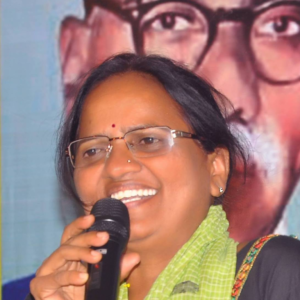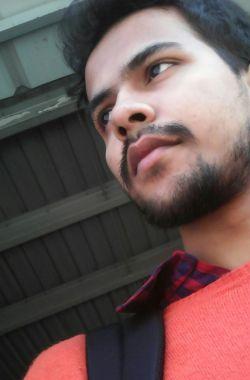Joopaka Subhadra
Dalit women are looked down upon culturally as inferiors and untouchables. They remain away from the village with no education and employment. They are subjected to economic oppression, labour exploitation, authority of the feudal lords outside and of the patriarchy at home. They are slaves of slaves. Dalit women are expected to remain servants. Slaves are expected to remain slaves. They live in a social system that poured lead in their ears and cut their tongue if they studied. Dalit women’s experiences are caste experiences and working class experiences. They are not individual experiences but collective experiences.
The National Movement happened under the control and command of the dominant castes. Innumerable number of working class women who participated in that movement are not to be seen in history. The dominant castes blocked their visibility. Because, histories were written within the boundaries of the dominant patriarchy. Similar oppression can be seen in the Karamchedu, Chunduru and Dandora movements. The Karamchedu Dalit struggled against the values of Manudharma Sastra (which proclaims that there is nothing wrong in killing Dalits) and became a path of light for Dalits across the country. The Karamchedu movement brought the SC/ST Atrocities Act 1989 after the massacre of Dalits by the dominant castes on July 17th, 1985. Several issues such as Ambedkarism and constitutional solutions came up for discussion in society pointing at the caste-based discrepancies. The consciousness of identity, self-respect, unity and integration increased among Dalits. The then Dalita Mahasabha originated from the blood of Karamchedu Madigas and led the Dalit movement.
Women played a crucial role in this inspiring Karamchedu movement. This movement started with a dispute over drinking water. A woman called Munnangi Suvartamma protested against the dominant caste arrogance. She confronted the people who drove the cattle into the drinking water pond meant for Dalits. The dominant caste condescension could not tolerate this and murdered six Madigas. Duddu Alisamma was an eye witness to this massacre. Caste arrogance killed her too.
It was Dalit women who breathed life into the Karamchedu movement. It was women who rescued the movements and the leaders of the movements from the police and the attacks by the arrogant dominant castes. It was Dalit women who helped the leaders and cadre to escape from the village and guarded them at the cost of their life. It was Dalit women who cooked and served for thousands of people in the camp and sustained the movement. Dalit women did dharnas and rastarokos. Several women like Hetuvada Lakshmi, Suvartamma, Sulochana, Yesamma were beaten with lathis. When the Dalita Mahasabha leader Katti Padmarao was arrested, Dalit women united to question the political leaders and restricted their movement by blocking their vehicles. They were beaten by the police with lathis. These women continued the Karamchedu struggle until the arrested leaders were released. They reached the district headquarters, Hyderabad and Delhi courts to give their evidence. Where are these women who did so much for the Karamchedu movement, now? How many women were there? What were their names? Dalit leadership proclaims that Karamchedu movement is twenty five years old but does not either see or remember the sacrifice of the lives of Suvartamma, Yesamma and Alisamma.
The Chunduru incident happened on August 6th, 1991. The upper caste people massacred six Dalit youth saying that they had bullied the upper caste girls. That a special court came to the victimized for hearing can be considered the victory of this movement. It was these Dalit women who countered all kinds of attacks on Dalit villages. There was a Dalit march from Chundur to Delhi. It was Guduri Leyamma who sacrificed her life in that march. Dalit women cooked in the streets of Delhi and sustained the cadre and the leaders in the Dalit march. Participating in the Dalit movement on one hand and cooking in the streets on the other hand, Dalit women struggled and made the Delhi Dalit march a success. They declared that they were not going to move from Delhi until the governments responded. The SC and ST parliamentary members who responded to the intensity of Dalit women’s struggle went to meet the then President of India R. Venkatraman. But, the President did not allow them to. It was from those flames of protest that the Dalit women raised the slogan for a Dalit president and stood by the victims.
It is very important to recognize the fact that it was mainly Dalit women who gave flesh and blood to Chunduru movement and fought till the end. There were several Dalit women in the Chunduru movement. Bitta Mary Leela Kumari worked as part of the cadre and also led the cadre from the beginning of the Chunduru movement till the culprits were punished. Chunduru Gresamma lost her son (Anil Kumar) in the attacks by the upper castes and refused to take his dead body, prioritizing the movement. Several other women like Sakuntalamma, Pippara Mahalakshmi, Siddellamma, Timmasamudram Subbulamma, Lalitamma, Manemma and many others led the Chundur movement and became a great strength for the movement. But, they are considered mere off-stage people and not recognized in the struggle. Perhaps, this is not Dalit culture!
The Madiga Reservation Porata Samiti (MRPS) that started in 1994 and Madiga Hakkula Dandora Udyamama placed new questions, new dimensions and new consciousness in front of the society. They said that SCs are not monolithic, that there are many differences between the 61 scheduled castes and that the word Dalit does not represent all scheduled castes. It turned into a movement arguing that the major part of the 61 scheduled caste reservations in education, employment, welfare and political fields is being claimed by the Mala caste and that this situation should be changed by providing reservations according to the population ratio. The Dandora movement demanded that the constitution should be amended to implement equal justice and that the state and central governments should also take the necessary steps to that effect. The dominant caste system has pushed the Dalit castes into problems such as untouchability, poverty, atrocities, bonded labour, jogini system, child labour, illitrary, landlessness etc. Madigas demanded that they should get self-esteem, dignity and justified share. This Madiga movement inspired the oppressed scheduled castes, backward castes, tribal communities and minorities who woke up to realize how much they lost in history and became conscious to create their own identity. It was Madiga women who played a crucial role and presented sensational ideas in this consciousness movements.
Large number of Madiga women came together and led the movement with the slogan, Our Arundhati in the sky and our lives in the depths. A state-level Madiga women’s meet was held in Bhuvanagiri of Nalgonda district in 1997. Thousands of Madiga women participated in that meet. Several Madiga women who were daily wage workers directly and indirectly became part of the Dandora movement. Where are the women like Mary Madiga, Varalakshmi, Yellamma, Sulochana, Indira, Dhanalskhmi who barged into the Assembly to distribute the pamphlets and created a sensation, now? The Dandora movement did not recognize the police lathi charge on them for barging into the Assembly and distributing the pamphlets. Which Maisaiah invisbilised the struggles of Bodige Shobha, Jeeva, Seshamma, Virupakshamma, Dayamani, Yatakula Sulochana and Rangamma who stood in the forefront of the Dandora Movement to lead it? How far did the Dandora movement recognize them? It is an undeniable fact that the support for the Dandora movement increased within and outside of the assembly from the political parties only because the Madiga women barged into the assembly and distributed the pamphlets. The adventures, unparalleled battling spirit and brave sacrifices of these women in leadership became the strength and support for the Dandora movement. But, women remained worthless people in the history of Dandora movement. Of late Dalit women are becoming conscious about their partnership and recognition.
Dalit men question the casteist society about the lack of equal justice, recognition and respect for them as human beings. But, they deny recognition in movements and partnership in leadership for Dalit women fight on par with them. They erase Dalit women’s traces in the history of the movement. This is against Dalit philosophy. It is undemocratic for the Dalit men to make the Dalit women silent though Dalit women sacrificed their lives in Chundur and Dandora movements, shed their blood and were beaten up with lathis. Even today, no newspaper speaks to Dalit women leaders, but only to Dalit men leaders,to discuss Dalit movements. No camera eye turns towards them. But, there is every need for the society to see and hear the definitions, expressions, adventures, sacrifices, experiences and emotions of Dalit women with regard to Dalit movement.
~~~
Jupaka Subadra is an organic Intellectual, writer, and activist whose writings are published in Telugu and translated into various Indian languages.









